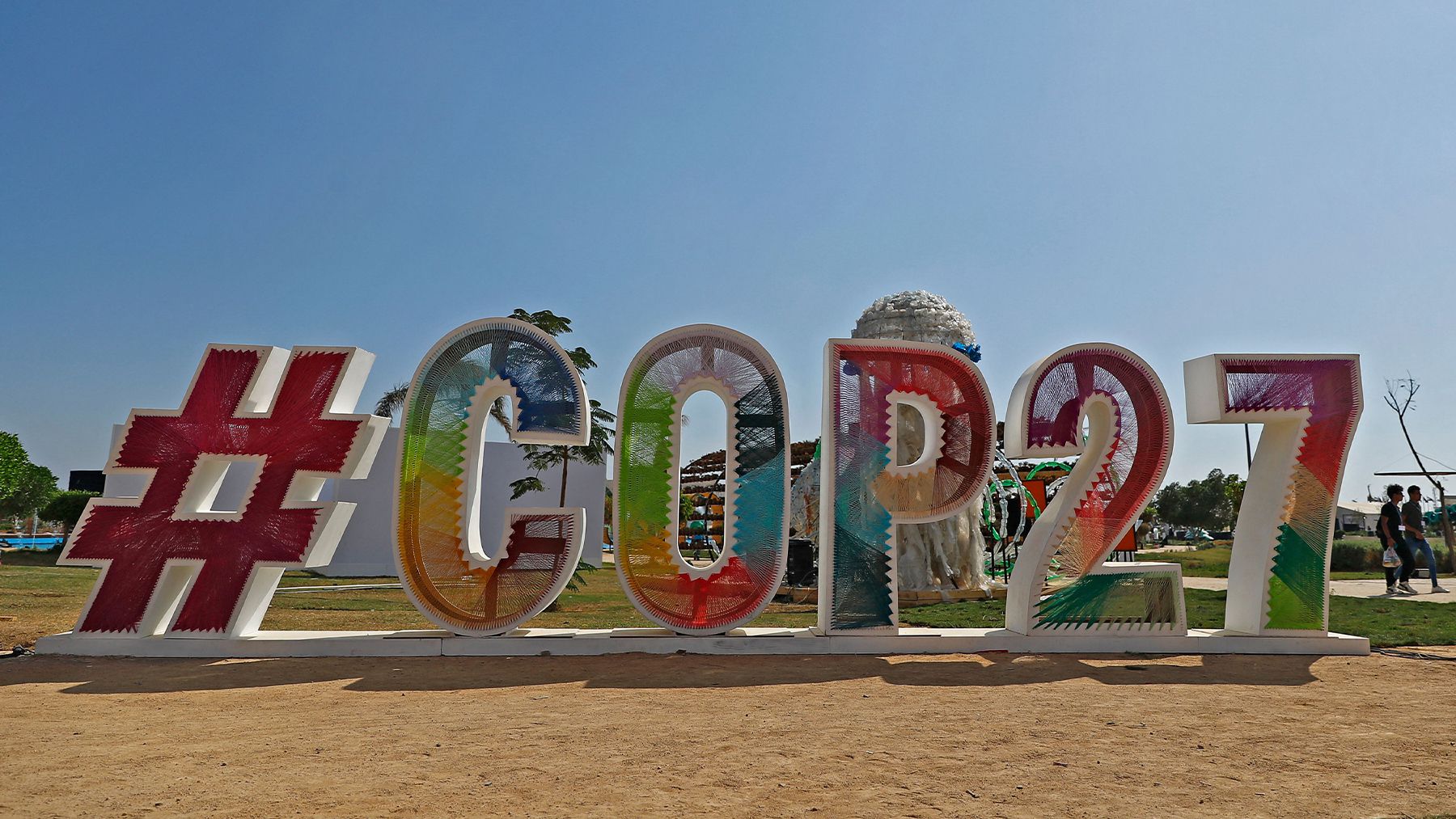
“We are in the fight of our lives,” said UN secretary general António Guterres at the opening of the world’s most important climate summit this month. “We are losing.”
This year’s annual UN Conference of Parties (COP) is taking place against a grim backdrop: The world is currently on track for climate catastrophe, with some impacts already irreversible.
Carbon dioxide emissions hit a new record this year, leaving 50/50 odds of keeping global heating below 1.5C by the end of the decade, according to a report published by the Global Carbon Project Friday.
An associated succession of extreme weather events, including devastating flooding in Pakistan and record heat waves in Europe, have increased the pressure on attendees gathering in Sharm el-Sheikh, Egypt to deliver more than the usual splashy climate pledges — especially as most companies are off course to deliver on their commitments.
At the summit’s key fashion-focused event on Friday, industry executives acknowledged the need for more and faster action. And yet the path to delivery remains vague and riddled with structural hurdles.
“I don’t think we’re on track,” said Delman Lee, vice chair at manufacturing giant TAL Apparel. “We commit to it, but we don’t know how to get there… [it’s] a leap of faith commitment.”
This year’s COP is taking place as fashion’s sustainability efforts face a reckoning. A wide-ranging greenwashing crackdown this year has exposed longstanding criticism of voluntary, industry-backed initiatives and ratcheted up the pressure for the sector to show all its talk can deliver real results.
Big brands have provided limited information about how they plan to meet climate goals or galvanise the billions of dollars in spending required to do so. Emissions at many of fashion’s biggest companies, including Nike, Kering and Zara-owner Inditex, are still rising.
It’s an issue that extends beyond fashion. On Wednesday the UN published a report slamming greenwashing in corporate climate commitments and laying out a demanding set of standards to make them more robust.
New initiatives announced by the fashion industry this week have focused more on shoring up existing efforts and defining the path forward, with executives keen to emphasise a push to accelerate and scale action.
The UN Fashion Industry Charter for Climate Action and Sustainable Apparel Coalition put out a call for feedback on new guidelines detailing how the industry should measure supply chain emissions. And industry lobby group Global Fashion Agenda (GFA) and the United Nations Environment Programme launched a consultation to define common goals for a “net-positive fashion industry.”
It’s the latest in a long line of initiatives geared towards establishing clear targets to address the industry’s impacts.
In 2018, big brands from Burberry to H&M pledged to slash their emissions with the launch of the UN Fashion Industry Charter for Climate Action, updating those ambitions at last year’s COP in line with efforts to limit global warming to 1.5C. Roughly a third of the fashion industry got behind a series of targets established by the Fashion Pact in 2020 to protect the climate, tackle plastic use and address fashion’s impact on biodiversity loss.
The GFA’s aim is to address gaps in existing targets, including topics like labour rights, and align companies across the sector — many of which have yet to engage with the issues — around common and measurable goals, GFA executive Federica Marchionni said.
“The targets we are setting are not to please the industry, but to push the industry,” she said.
Efforts to establish common goals and more robust data are valuable. But they also show that years after making commitments, the industry is still laying the basic foundations required to deliver on them.
For more BoF sustainability coverage, sign up now for our Weekly Sustainability Briefing by Sarah Kent.



